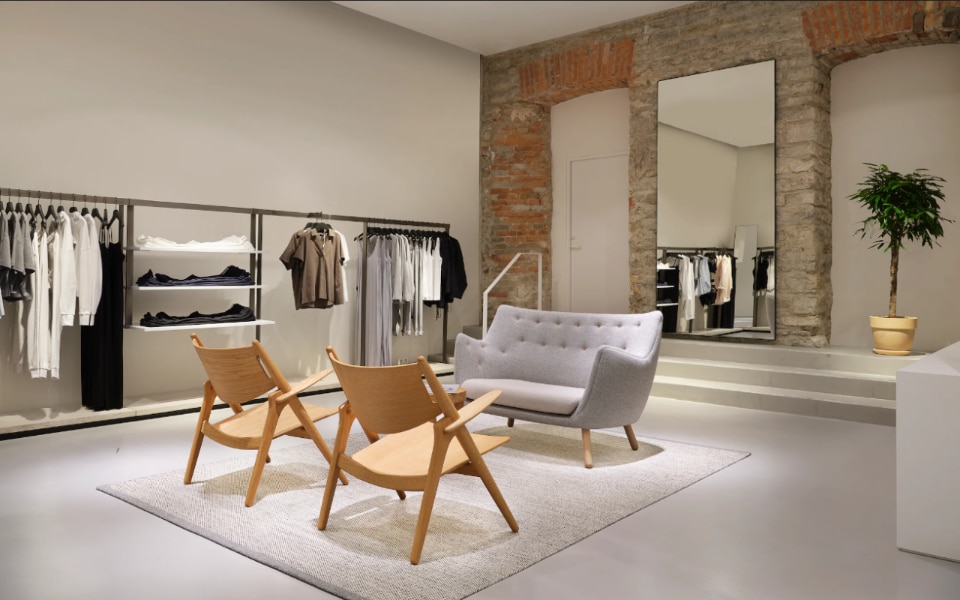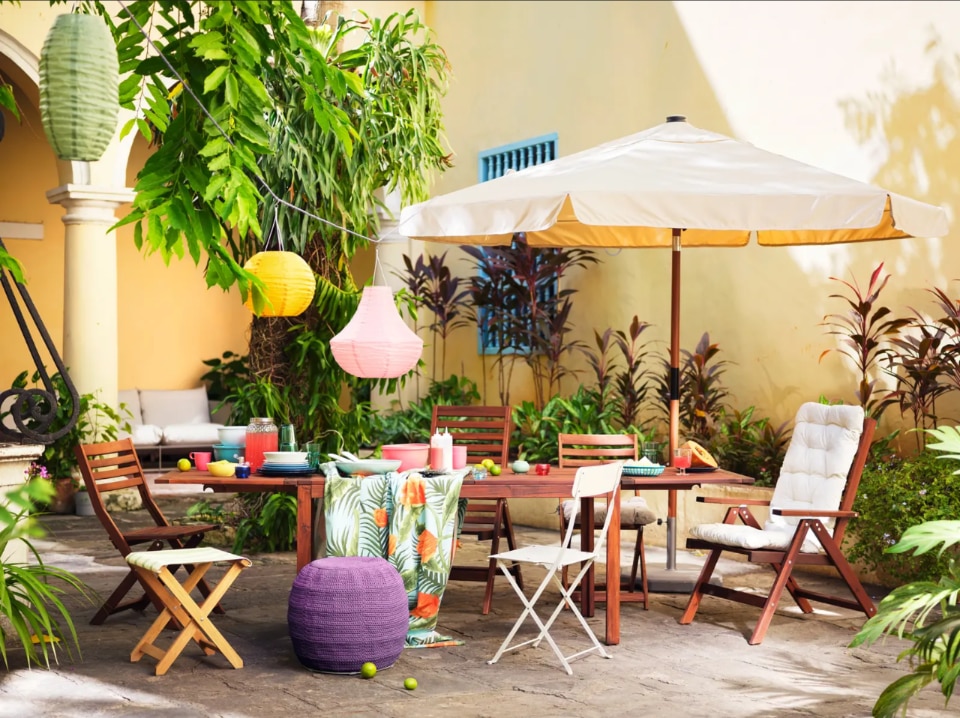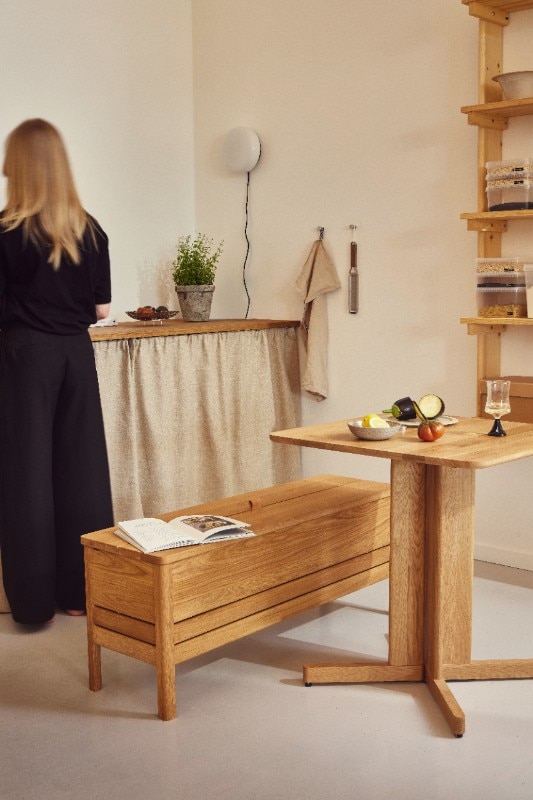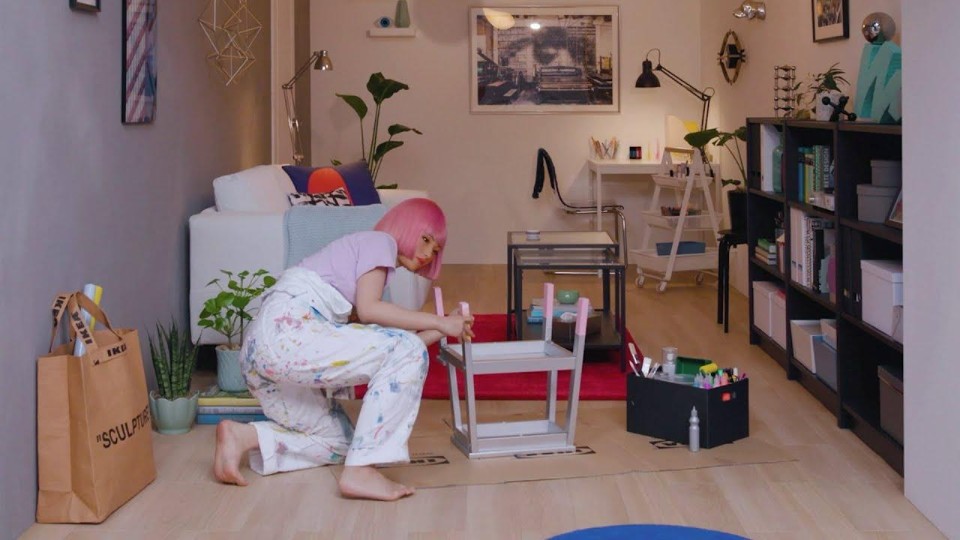In 1950, Carl Hansen & Søn—one of the most renowned Danish furniture manufacturers—produced the first model of the CH24 chair. Today, seventy-five years later, what everyone has come to know as the Wishbone Chair is one of the most copied and coveted pieces around. On TikTok, influencers unbox it; on Instagram, the posts are countless.
And it’s not an isolated case. Nordic design speaks the language of the new generations, even though it was born nearly a century ago. Clean lines, organic shapes, natural materials, tactile textures, bright color palettes: the same qualities that defined Scandinavian design in the 20th century are now being chosen by millennials and Gen Z for their homes—small, temporary, and rented.
@_katiepeake Finally found my dream wishbone chairs 🫶🏻 use ‘KP10’ for 10% off @oliviasukofficial #wishbonechairs #wishbonechair #wishbonediningchair #diningchair #furnitureunboxing #oliviasuk #diningroominspo #diningroomchairs ♬ Golden Hour: Piano Version - Andy Morris
But why? What did Northern European designers understand so profoundly that it continues to inspire and guide generations today? The widespread presence of Scandinavian thinking in the spaces and habits of younger generations is not just an echo of 20th-century design culture or the result of its more recent rediscovery—when, in the early 2000s, “Scandinavian” became design’s dominant ethos. It’s a renewed, deliberate response to their current needs.
Nordic design speaks the language of the new generations, even though it was born nearly a century ago.
Many of the brands Gen Z grew up with come from the North: H&M, Ikea, Cos, Hay, Flying Tiger Copenhagen. They’re our underwear, our T-shirts, our favorite mug, our TV stand. They’re the stores that, since the 2000s, have been regular stops at the mall or during a trip downtown. These Swedish and Danish giants have managed not just to export products but to import new ways of living, new habits, new rituals—what today’s youngest generations see as simply the norm.

The deep bond linking them to Nordic design has its roots in a concept so central to Danish culture that it has its own name: hygge, a sense of psychological, environmental, and emotional well-being. Aspiring to achieve this state is a shared desire, and it extends far beyond the physical architecture of a space. It touches food, clothing, soundscapes, and the quality of experience as a whole.
What does design have to do with all this? Everything—if we look at the furniture and objects steeped in Nordic culture: sensitive to comfort and respectful of the human being. These are products that don’t impose a way of use but suggest and inspire it, encouraging open-ended, user-centered interaction.

Scandinavian furniture is also genuinely democratic and versatile. Unlike the design traditions of other European schools, Nordic pieces are, in most cases, completely independent of the context they’re placed in. These are nomadic, self-sufficient objects, capable of fitting into any space regardless of its characteristics—and often designed to be stackable, portable, foldable.
Scandinavian furniture does not impose a way of use, but suggests and encourages it, promoting free interaction that is always centered on the person.

An ideal condition for the fluid, temporary homes of young people. That’s a principle many design brands now embrace—first and foremost Ikea, which has always offered intelligent, affordable solutions, and whose global campaigns successfully export a local, all-Swedish vision of everyday life in constant evolution.
And then there’s sustainability—real sustainability. Not just about materials or even production and distribution. Not only about the fact that these objects often last practically forever. Scandinavian design is sustainable because its relationship with nature defines every aspect and process. And “sustainability” is a keyword for Greta Thunberg’s generation—a concept often overused or misunderstood, but always present, even in the formal and conceptual DNA of design.
@torshov1923 And that scandinavian girl is me 🫶 #homemakeover #interiors #renovation #2023recap #renovering #beforeandafter #makeover #interiordesign #dreaminteriors #homemakeover #designinspiration #diy #handmade #bathroomdesign #finditstyleit #retrostyle #scandinaviandesign #kitchendesign #homeinspo #woodwork ♬ Ethereal - Txmy
Ultimately, the great revolution of Nordic design lies in its refusal of formalism and pretense. Here, form truly follows the noblest of functions: to make people more aware of and grateful for the objects in their lives, as tools that contribute to a life experience that is as positive and meaningful as possible.


